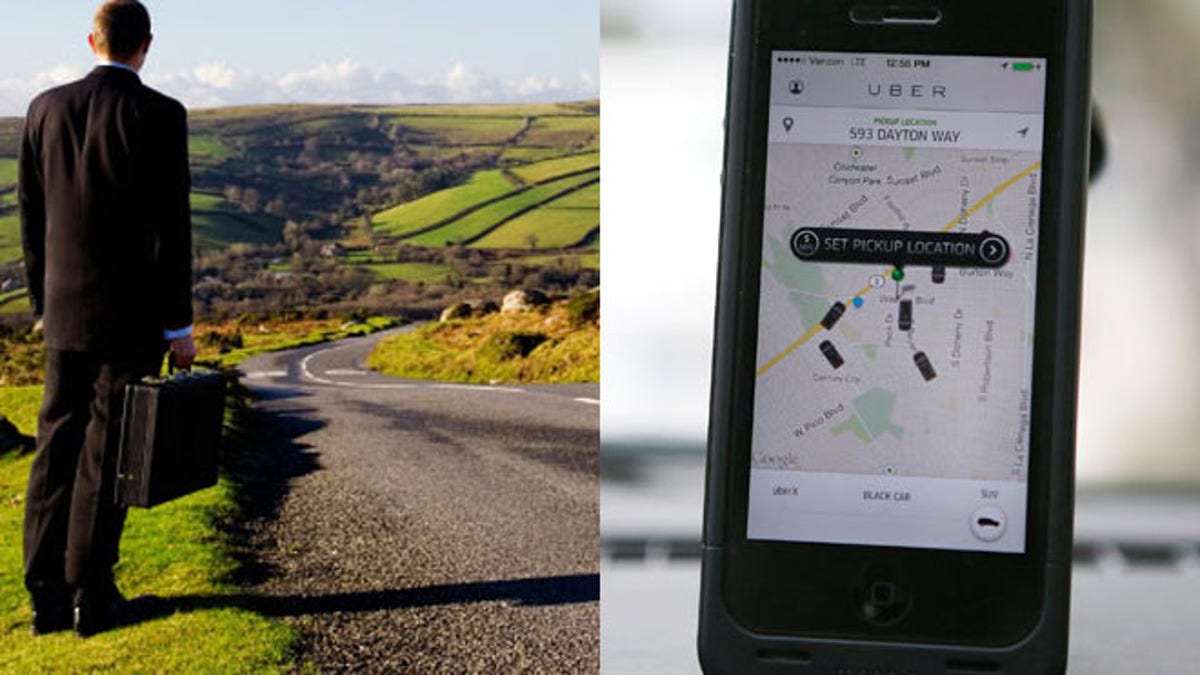
Sometimes it make sense to use ride-sharing --even for long trips, But do your research first. (iStock/ AP)
Need to get somewhere on a budget?
Thirty years ago you’d head to the highway onramp, stick out your thumb, and catch a ride with anyone who was kind enough to pull over and give you a lift. It might not have been the safest choice, as you never knew who might pull over and what their motivation might be.
Today it’s a very different world. Ride sharing is both viable and mainstream. The most recognized platform for finding a ride is Uber, the multi-billion dollar business that connects passengers with drivers through its app. It operates in more than 100 cities in the U.S., and 45 countries worldwide and is challenging the traditional taxi and limousine services in each of those markets.
A competitor to Uber is Lyft, a peer-to-peer service that has launched in numerous cities. According to Lyft, they are different in that they don’t engage professional drivers; just people that want to make themselves, and their cars, available for rides. Another player with a similar model to Lyft is Sidecar.
Is it Safe?
Uber runs background checks on all potential drivers as the first level of screening to ensure safety. This is true in the U.S., but each market has different rules so it’s important to know the rules for the destination you might be in. An added level of security comes in the form of reviews, when passengers rate their experience on a scale of one to five stars.
Uber offers both private car and ride-sharing options where you can jump in with strangers. Should you worry when traveling with strangers in the case of an Uber or Lyft ride-share? If you’ve ever taken the Airport Shuttle, you’ve had a similar, but not as comfortable, experience. My answer? Go for it.
Lyft runs background and department of motor vehicle checks on drivers and has a number of other requirements they must meet in order for them work for the service, not unlike Uber. They have a different twist on reviews, though, allowing both the passenger and the driver to rate each other. Should a review be below 3 out of 5 stars, they won’t match those two individuals again.
What About That Long Trip?
There are services for that, but they are not Uber, Sidecar or Lyft. Go beyond a limited range on Uber, like a local airport, and the charges quickly escalate. Services like Zimride, Sidecar and Ridejoy have stepped in to fill the gap by matching people looking at longer trips with those who are heading in the same direction. Instead of standing outside waiting for a ride with your thumb out, you’ve been matched with someone in advance and have had a chance to check them out. The service Zimride requires a Facebook log in, so it’s difficult to create a fake profile. This integration can show a rider whether the potential driver has any mutual connections to them in the social media world. Similar to Uber and the others, they also provide a ratings and review service to ensure an additional level of safety and feedback.
Isn’t it just hitch hiking or carpooling by a different name?
Before the Internet, you’d place a classified ad in the local newspaper and hope you’d hear from someone looking for a match. Or, you’d simply hitchhike. With the Internet and sites like Craigslist.com, travelers can post a free ad looking for a ride, and then sit back and wait for some responses to roll in.
The concept of ride-sharing isn’t new. Indeed, it’s been around since the time of horses and carriages. What is different is the technology; it creates the ability to find a match in minutes and to vet that match in multiple ways. With any smartphone, you are minutes away from snagging a ride in many cities and towns.
Is it safe? It’s as safe as crossing the street as long as you take the advice of the various services in the process sites.
More From TravelPulse
Fall Brings Halloween and Thanksgiving Travel Packages
Caribbean Packages Highlight Distinct Island Attractions
Cruise Lines Roll Out Deals for Annual Promotion
How Inclusive is All-Inclusive?
